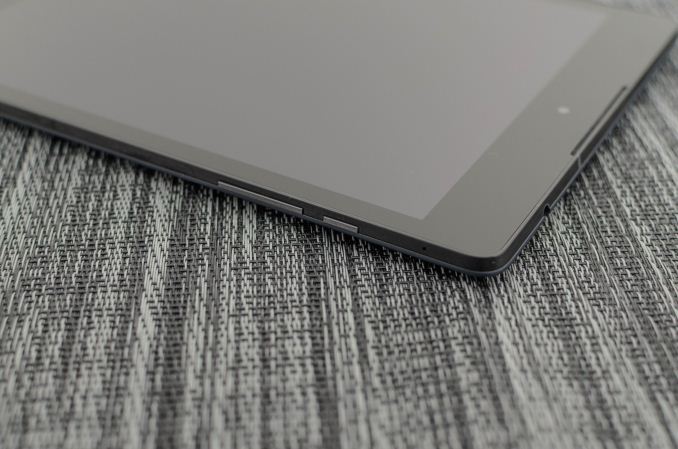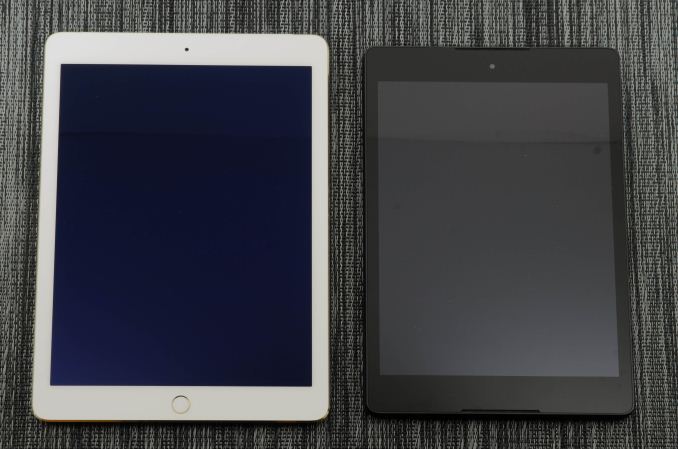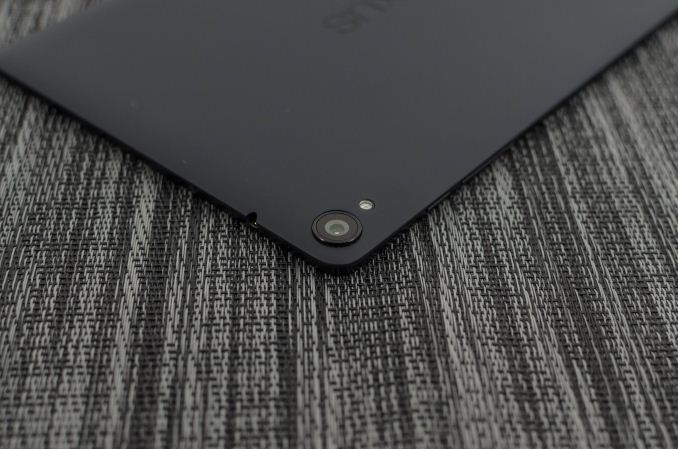The Google Nexus 9 Review
by Joshua Ho & Ryan Smith on February 4, 2015 8:00 AM EST- Posted in
- Tablets
- HTC
- Project Denver
- Android
- Mobile
- NVIDIA
- Nexus 9
- Lollipop
- Android 5.0
Final Words
The Nexus 9 is undoubtedly an aspirational device. For a long time now, Google and the Android tablet market in general have been in a position similar to Amazon’s Fire tablet. This has meant that the margin on the hardware itself has been quite low, and while quality was possible to achieve there were often sacrifices made in order to reach the targeted price point. This was seen in the form of lower CPU and GPU bins in the SoC, lower quality NAND, and generally poorer displays.
The Nexus 7 (2013) did manage to mostly avoid these issues, but Google had set the bar for price and performance to the point where OEMs would have issues with maintaining acceptable profit margins on a device. The Nexus 9 changes this strategy by reaching for a higher price point and attempting to deliver a no-compromise tablet in return. To figure out whether Google has succeeded, it’s worth going over each aspect of the device before coming to any sort of judgment.
The first and quite possibly most important aspect of the Nexus 9 is the SoC. To this end, the Nexus 9 is the very first Android device with AArch64 support enabled in Android. NVIDIA’s Tegra K1 with Denver is effectively the state of the art when it comes to SoCs in the Android OEM space, and no other device has launched with this SoC. While the fact that the SoC is built around the ARMv8 ISA is important, the architecture of the CPU itself is easily one of the most interesting designs we’ve seen in years. Unfortunately, while the design of the CPU is academically interesting it doesn’t seem that this produces real-world benefits. The Nexus 9 has one of the fastest SoCs we’ve seen to date, but this comes at the cost of worse power efficiency than the Cortex A15 version of the Tegra K1.
Another piece of the puzzle is the design, which is one of the key differentiators for a high-end mobile device. While one can debate the merits of various materials, it seems to be clear that an all-metal unibody chassis would’ve greatly improved the design of the Nexus 9 and justified its positioning better. While there is some level of give in the back cover, the buttons are quite thin and hard to find, and there’s a noticeable seam where the back cover and metal frame meet, the design isn’t actually all that bad in practice. Unfortunately, this seems to be a bit of a sore point as well for the Nexus 9 when compared against the iPad lineup.
While the SoC and design are often points of distinction for a premium tablet, the display is critical for any tablet. In this regard, the Nexus 9 does surprisingly well. With a 4:3 aspect ratio, high resolution, and high quality color calibration HTC and Google have outfitted the Nexus 9 with a great display. Unfortunately, there’s a great deal of variability present in these displays that presents itself in the form of backlight bleed along the edges of the display. While my unit only has a slight amount of bleed along the top edge of the device, other units can have more or less backlight bleed depending upon variance in production.
The one aspect that seems to be the product of a poor design choice is the high reflectivity of the display. Although I’m reasonably sure that the display is laminated due to the lack of an obvious gap between the display and glass, it seems that the optical material between the display and glass is poorly designed as I can see a distracting double reflection in the display. The Nexus 9 also compares unfavorably to the iPad Air 2 in this case as the anti-reflective coating on the iPad Air 2 is far superior to just about anything I’ve seen on the market.
Although I previously noted that the power efficiency of the SoC isn’t up to scratch, overall battery life is quite good on the Nexus 9. With a combination of a large battery and efficient display, Google and HTC have managed to compensate for the power consumption issues that come with Denver’s performance. Unfortunately, it seems that Kepler’s desktop-first design results in worse power efficiency than what we see on competing solutions such as the “GXA6850” found in competing SoCs. Even if this is compensated for by the ability to enable desktop-class gaming, the Nexus 9 doesn’t appear to support full OpenGL to begin with, unlike the SHIELD Tablet. This means that the extra capabilities enabled by the GPU are effectively wasted, which hurts the value proposition for the device overall. In light of the launch of the Tegra X1, I can't help but wonder how different the experience of the Nexus 9 would be with NVIDIA's latest SoC.
Outside of these primary elements of the tablet, there seems to be a reasonable level of attention to detail. The camera is acceptable, even if the focus and capture latency aren’t the greatest. The audio quality from the speakers is also quite good, and really helps to enable a great experience when watching any kind of video or listening to music without earbuds/headphones. The software experience is acceptable, although Google continues to fight issues with ecosystem support for tablets.
With all of this in mind, it’s hard to give a resounding recommendation of the Nexus 9. The Nexus 9 is a step towards a high-end Android tablet, but not the leap that Google was hoping for. If you want an Android tablet near the size of the Nexus 9, I can’t really recommend anything else. The Galaxy Tab S falls short on account of performance and battery life, and despite the somewhat unremarkable design of the Nexus 9 I believe that it is nicer than the Galaxy Tab S. However, if one were to assume that OEMs are currently readying devices to truly carry the torch of the high-end tablet, the Nexus 9 is a hard sell. I suspect that this wouldn’t be nearly as difficult if the Nexus 9 had a lower price point of $300 and $350 USD for the 16GB and 32 GB WiFi variants, and $450-$500 for the 32GB LTE variant. Google has managed to get close to the mark with the Nexus 9, but like the Nexus 6 it seems that it’s up to the OEMs to cover the remaining distance.














169 Comments
View All Comments
UtilityMax - Sunday, February 15, 2015 - link
I don't fully understand you comment about the SoC? You think web browser is using the hardware somewhat differently from the dedicated apps?My comment is about the fact that there is not point to have most of the dedicated apps when you have a tablet with a screen the size of a small laptop or netbook. Just fire up the web browser and use whatever web site you need. Most dedicated mobile apps exist because the screen size of a cell phone is pretty small, which can make for an awkward experience even when you pull a mobile web site though a web browser.
UtilityMax - Sunday, February 8, 2015 - link
It's not entirely true that there isn't much in the tablet space, besides Nexus 9 and Galaxy Tab S. If your pockets are deep enough, you could always get the Apple iPad Air 2. Apple gives you a well balanced tablet with great build quality, fine screen, CPU/GPU performance, and battery life. The only thing that's missing is an SD card slot, but at least there is an option a 64 or 128GB model. Personally, I ended buying a Tab S 10.5 because it was truly difficult to resist it at only $400 sale price, plus $35 for a 64GB SD card. Despite all the disappointing benchmarks, Tab S provides a pretty smooth and fluid android experience with a great screen. Battery life is the only thing that's getting on the way. Five hours of web browsing or standby is pretty disappointing.wintermute000 - Monday, February 9, 2015 - link
Sony Xperia Tablet Z2. SoC is one gen behind but if you can get it for a good price, you're laughing. Fantastic build, clean stock software, lag free.sunil5228 - Sunday, February 8, 2015 - link
Brilliant ! Esp loved the segway into the Denver CPU and dual vs quad arcitechture comparisons,very eye opening. thankyou sirbdiddytampa - Wednesday, February 11, 2015 - link
Picked one of these up a couple weeks ago and love it. It performs phenomenally well, and looks great. It's a bit heavy for its size and the thin bezel on the sides makes it difficult to hold with one hand without touching the screen, but overall its a fantastic tablet. Highly recommend it.Ozo - Monday, February 16, 2015 - link
Thanks for the lucid explanation of Denver.Any insight into why Google/HTC dropped the ball on "wireless" Qi charging? Especially when it was finally added to the Nexus phone!?!
I was set to upgrade from my Nexus 7 (2013), but no Qi = no sale. :(
Fardreit - Monday, February 23, 2015 - link
I'll be honest: I don't understand 80% of what the reviewer wrote. But the 20% that I do understand is enough for me to appreciate the conclusions drawn. I value the informed reviews here much more than those at the 'fan' websites. At Anandtech, people really know what they're talking about, even if I don't.When I'm able to follow the high-tech insults you guys sling at each other, then I know I've made progress.
flashbacck - Wednesday, February 25, 2015 - link
Does the Shield Tablet use a similar DCO? I have noticed during it has performance issues during regular use. I wonder if it's this DCO that still needs work.ahcox - Thursday, February 25, 2016 - link
What is the accuracy of the image labelled "K1-64 Die Shot Mock-up"? Is it a colorized and enhanced version of a real die photograph or is it a pure invention? That 16 * 12 array dominating the picture seems a little off to me: surely there should be structures common to each 16*2 group forming an SMX? Kepler is not a simple tiled sea of cores.